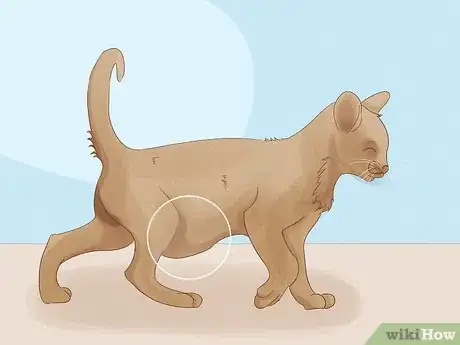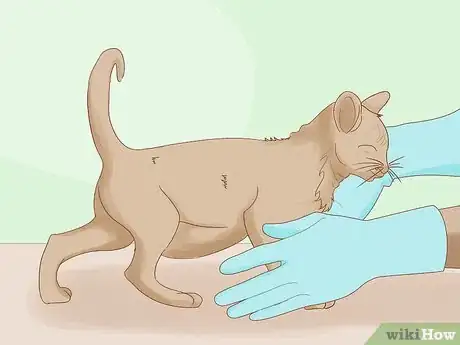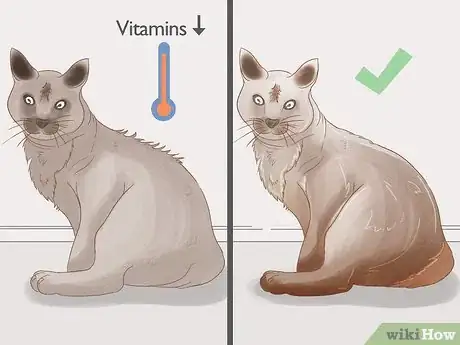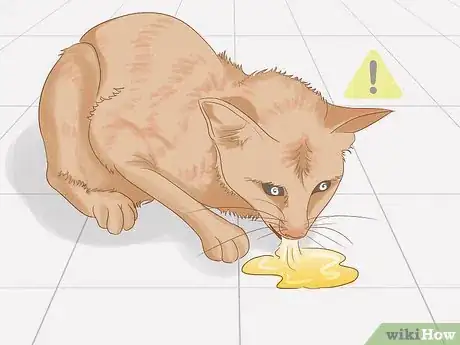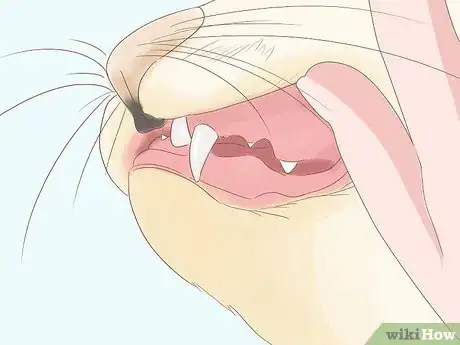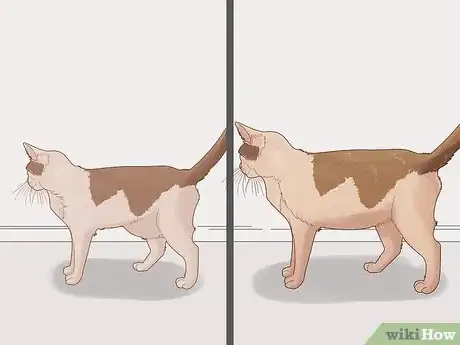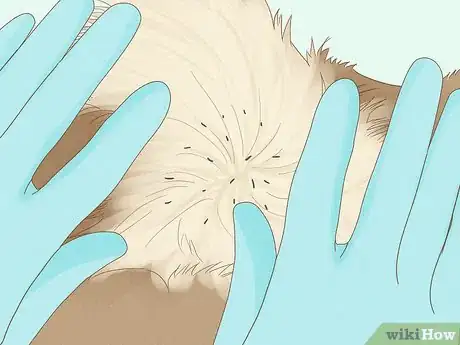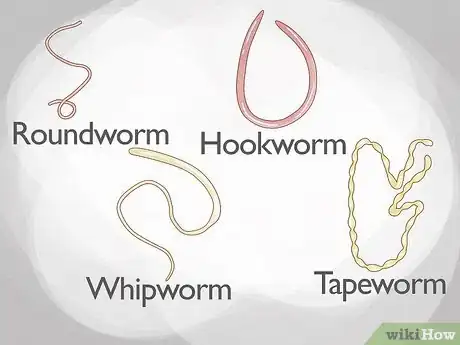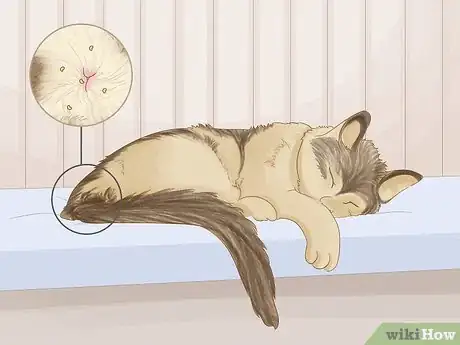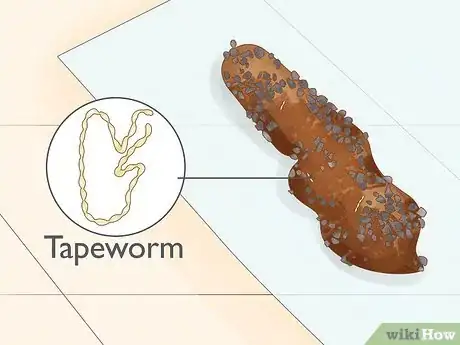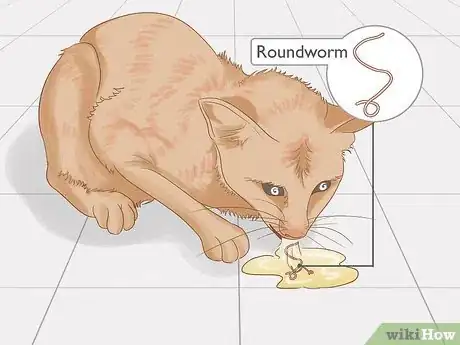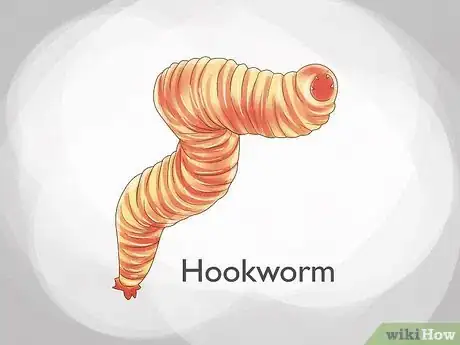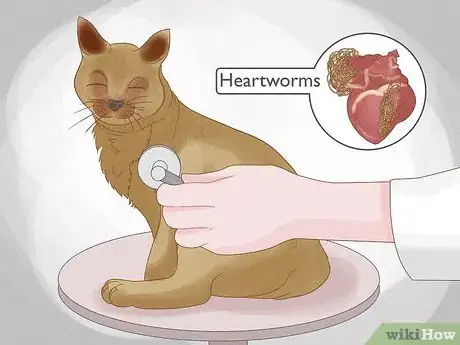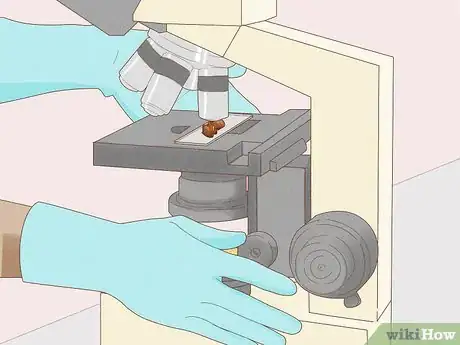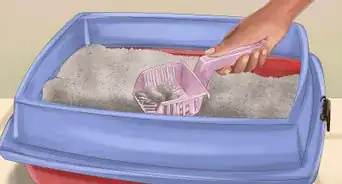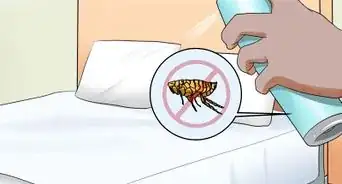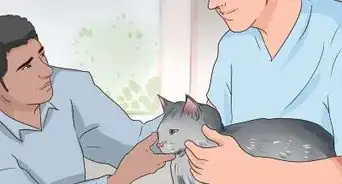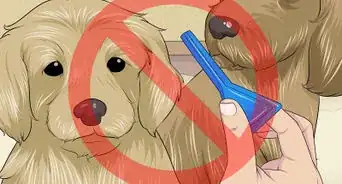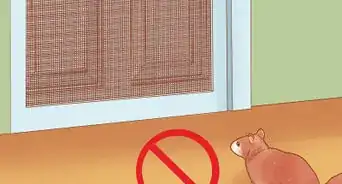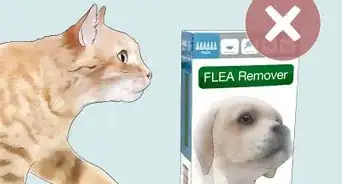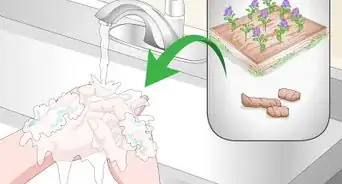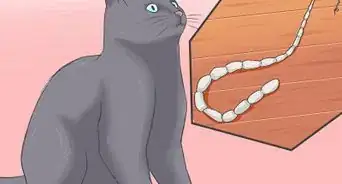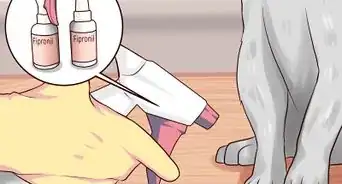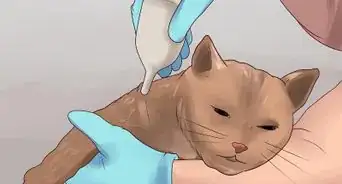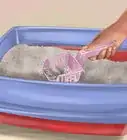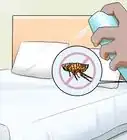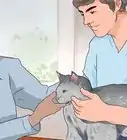This article was co-authored by Brian Bourquin, DVM. Brian Bourquin, better known as “Dr. B” to his clients, is a Veterinarian and the Owner of Boston Veterinary Clinic, a pet health care and veterinary clinic with three locations, South End/Bay Village, the Seaport, and Brookline, Massachusetts. Boston Veterinary Clinic specializes in primary veterinary care, including wellness and preventative care, sick and emergency care, soft-tissue surgery, dentistry. The clinic also provides specialty services in behavior, nutrition, and alternative pain management therapies using acupuncture, and therapeutic laser treatments. Boston Veterinary Clinic is an AAHA (American Animal Hospital Association) accredited hospital and Boston’s first Fear Free Certified Clinic. Brian has over 19 years of veterinary experience and earned his Doctor of Veterinary Medicine from Cornell University.
There are 8 references cited in this article, which can be found at the bottom of the page.
wikiHow marks an article as reader-approved once it receives enough positive feedback. This article received 22 testimonials and 92% of readers who voted found it helpful, earning it our reader-approved status.
This article has been viewed 761,189 times.
Intestinal parasites, or worms, commonly occur in kittens and cats. These nasty pests are acquired in a number of ways. Kittens can pick up worm eggs via their mother's milk, young cats may get hookworm infections via their skin, and tapeworms are caught by ingesting fleas, infected rodents and rabbits. Because worms are so prevalent in cats, it is important to be able to recognize the signs that your cat has worms so that you can get it the treatment it needs as soon as possible.
Steps
Looking for Physical Signs That a Cat has Worms
-
1Take note if your cat develops a potbelly. A cat with a heavy worm burden (which means that they have a lot of worms), tends to have a potbelly but little fat cover over the spine or pelvis. A typical potbelly looks like a swollen tummy, round and full, and often the swelling is carried down low on the cat's body (the cat may even look pregnant).[1] The difference between a potbelly and a fat cat is the rest of the cat’s body is also in poor condition.
- Roundworms are the most common cause of a potbelly, though other worms can also cause this symptom.
-
2Check your cat’s body for fat pads. When you run your fingers over a healthy cat’s backbone, you will most likely be able to feel bumps along the spine, but should not be able to feel sharp, angular bones. This is because there is a fat padding over the cat’s bones. Cats that have a lot of worms will not have these fat pads. When you stroke the cat’s back and pelvis, you may find that you can feel each sharp, angular bone.
- Body "condition" is a matter of assessing the fat cover over the cat’s bones. Landmarks such as the spine, hips, and pelvis are especially useful for this.
Advertisement -
3Look at the condition of your cat’s coat. Intestinal parasites steal much of the nutrition out of the cat's diet. This means that your cat does not get the vitamins, minerals, and proteins that they need to maintain a healthy coat. Check your cat for:
- A dull coat.
- A coat that lacks any sort of gloss.
- A matted coat.
-
4Pay attention if your cat experiences vomiting or diarrhea. Worms can physically irritate the stomach and intestinal lining, causing diarrhea and vomiting. A very high worm burden can physically obstruct the bowel and cause profound vomiting that is potentially life threatening. Cats can even vomit up a bundle of worms which look like squirming spaghetti.[2]
- If your cat begins vomiting uncontrollably, bring him or her to the veterinary clinic immediately.
-
5Look at your cat’s gum color. Some worms, especially hookworms, can make your cat’s gut bleed, which can result in slow but steady blood loss. This blood loss can lead to anemia, making your cat sluggish and weak if it is severe enough. In kittens it can be deadly.[3]
- You can recognize anemia by lifting you cat’s lip and looking at her gums. If your cat’s gums are healthy, they should be pink in color. If the cat is anemic, the gums will be white, grey, or a washed-out pink.
-
6Pay attention to signs of worms in kittens. Kittens with worm infections tend to be lethargic and fail to thrive. This means that they do not grow as well as their other litter mates. They are smaller, less vigorous, have dull coats, potbellies, and less fat over their ribs and backbone.
- If you do not have other kittens for comparison, this can be difficult to assess but a fit, healthy kitten should be bright, playful, plump, and should have a soft, glossy coat.
- Heavy worm burdens in a kitten can have life-long ramifications causing ill health throughout its life.
-
7Check your cat for fleas. This is relevant because fleas carry tapeworm eggs. When a cat grooms itself, it may eat fleas infesting its coat, which allows the tapeworm eggs to enter into the cat's system.
- It may be easier to look for flea dirt, rather than the fleas themselves. Flea dirt is dried blood excreted by the flea and is often present in the coat of infested animals.
- To look for flea dirt brush a section of the coat in the wrong direction and look for small dark dots near the base of your cat's hairs.
- To check that the specks you find are flea dirt rather than just dust or dander, take a damp piece of white tissue and place the dirt on it. Because flea dirt is dried blood, when it comes into contact with the moisture the dirt will leave a red or orange stain.
- If you find fleas or flea dirt you need to treat the cat for the fleas and the environment (ie the house and bedding material) to rid the cat and home of fleas.
Identifying the Type of Worm
-
1Understand why you should try to identify the worms. If you suspect your cat has worms, the next step is to try to identify the type of worm. This helps you to know what sort of medication is going to be effective in getting rid of the infestation.
-
2Look for migrating tapeworm egg packs. Look under your cat's tail. Tapeworm egg packets migrate out of the cat's anus and get stuck around the fur near the rectum. The egg packets are a creamy-white color and are variously described as looking like rice grains, cucumber pips, or sesame seeds.[4]
- The egg packets may also get stuck to the cat's bedding, so have a quick look at your cat’s bedding as well.
- If you find these, take your cat to its veterinarian to get treated for tapeworm.
-
3Check your cat's feces for tapeworms. This is much easier to do if your cat uses a litter tray. Examine the feces for the presence of worms. Sometimes these are visible on the surface of the stool, but more likely you will need to put on plastic gloves and use a disposable tool to break the pellet open and look for worms inside.
- Tapeworms are a creamy white color, flat, and segmented. They average around 4 to 28 inches in length.[5] [6]
- Dipylidium caninum: The cat can get this type of tapeworm by eating fleas infected with tapeworm eggs.[7]
- Taenia taeniaeformis: Cats can get this type of tapeworm when they hunt, catch and eat rodents infected with this kind of tapeworm.[8]
-
4Recognize roundworms. Roundworms are very common and look like spaghetti or noodles. On average they are two to four inches long, but can grow up to five inches in length.[9] There are two different kinds of roundworms, both of which can be picked up in different ways:
- Toxocara cati: These worms can be picked up via the mother's milk, and most kittens are infected at birth. These are commonly responsible for pot-bellied kittens, and cause vomiting and diarrhea.
- Toxascaris leonine: These roundworms are acquired from contact with infected cat or rodent feces. The worm is sometimes vomited up whole, or passed out in the stool.
-
5Identify hookworms. Hookworms are small (0.5 to 1 centimeter), curly worms that have a hook-like mouth. They are very hard to see with the naked eye. Ancylostoma duodenalis can be found in a mother cat’s milk, though kittens can also be infected by this kind of worm by walking on soiled, infected bedding.
- The tooth-like mouth parts attach to the lining of the small intestine and release an anticoagulant that causes blood seepage into the gut. Infected kittens tend to be anemic, lacking in energy, and grow poorly.
-
6Ask your vet to check your cat for heartworms. Heartworms are much more common in dogs than in cats. That said, it is still possible for cats to become infected. This sort of worm is found in blood vessels rather than in the intestine, which means that you will have to get a vet to check your cat for these types of worms.
- Dirofilaria immitis: Infected mosquitoes can transfer dirofilaria eggs into your cat’s bloodstream. The signs are nonspecific such as lack of energy, weight loss, and a cough. Sadly, some cats show no symptoms and die suddenly, because of a blockage in a main blood vessel to the heart.
-
7Have your vet take a fecal sample for analysis. The best way to check for worms (excluding heartworms) before they become a huge health liability is to take a fresh fecal (stool) sample to your veterinarian’s office. Adult worm will lay eggs while living in the cat’s intestinal tract. These eggs will frequently (but not always) be passed in the stool and can be seen after special preparation and examination under a microscope.[10]
- The eggs of different worms have a different physical appearance which aids in their identification.
- If the examination of your cat and its feces proves fruitless, this does not mean that your cat does not have worms. It merely means that no worms were passed out of its body. Some cats can harbor large amounts of worms and not pass any out. The only way to be certain is to collect a fecal sample to take to your vet for analysis.[11]
EXPERT TIPBrian Bourquin, better known as “Dr. B” to his clients, is a Veterinarian and the Owner of Boston Veterinary Clinic, a pet health care and veterinary clinic with three locations, South End/Bay Village, the Seaport, and Brookline, Massachusetts. Boston Veterinary Clinic specializes in primary veterinary care, including wellness and preventative care, sick and emergency care, soft-tissue surgery, dentistry. The clinic also provides specialty services in behavior, nutrition, and alternative pain management therapies using acupuncture, and therapeutic laser treatments. Boston Veterinary Clinic is an AAHA (American Animal Hospital Association) accredited hospital and Boston’s first Fear Free Certified Clinic. Brian has over 19 years of veterinary experience and earned his Doctor of Veterinary Medicine from Cornell University.Cat Veterinarian
 Brian Bourquin, DVM
Brian Bourquin, DVM
Cat VeterinarianOur Expert Agrees: Getting your cat's feces tested twice a year is the best way to regularly check for worms. This is especially important if your cats spend most of their time outdoors, though indoor cats are also at risk for worms.
Expert Q&A
-
QuestionCan worms transfer to humans? How would they transfer if they can?
 Pippa Elliott, MRCVSDr. Elliott, BVMS, MRCVS is a veterinarian with over 30 years of experience in veterinary surgery and companion animal practice. She graduated from the University of Glasgow in 1987 with a degree in veterinary medicine and surgery. She has worked at the same animal clinic in her hometown for over 20 years.
Pippa Elliott, MRCVSDr. Elliott, BVMS, MRCVS is a veterinarian with over 30 years of experience in veterinary surgery and companion animal practice. She graduated from the University of Glasgow in 1987 with a degree in veterinary medicine and surgery. She has worked at the same animal clinic in her hometown for over 20 years.
Veterinarian Yes. Passage of worms from cats to people is less common than from dogs, but it does happen. Children are most at risk as they are most likely to put their fingers in their mouth after playing in soil, contaminated with cat feces. Roundworms are caught by contact with infected feces, tapeworms by ingesting egg packets from fur or eating an infected flea, whilst hookworms pass from feces into the soil, and in moist conditions penetrate human skin to cause infection.
Yes. Passage of worms from cats to people is less common than from dogs, but it does happen. Children are most at risk as they are most likely to put their fingers in their mouth after playing in soil, contaminated with cat feces. Roundworms are caught by contact with infected feces, tapeworms by ingesting egg packets from fur or eating an infected flea, whilst hookworms pass from feces into the soil, and in moist conditions penetrate human skin to cause infection. -
QuestionMy cat has lost weight, isn't eating, and has a bloated stomach. What does this mean?
 Pippa Elliott, MRCVSDr. Elliott, BVMS, MRCVS is a veterinarian with over 30 years of experience in veterinary surgery and companion animal practice. She graduated from the University of Glasgow in 1987 with a degree in veterinary medicine and surgery. She has worked at the same animal clinic in her hometown for over 20 years.
Pippa Elliott, MRCVSDr. Elliott, BVMS, MRCVS is a veterinarian with over 30 years of experience in veterinary surgery and companion animal practice. She graduated from the University of Glasgow in 1987 with a degree in veterinary medicine and surgery. She has worked at the same animal clinic in her hometown for over 20 years.
Veterinarian Most people think of a 'wormy cat' as having a pot belly, indeed this is often how 'wormy' kittens look. However, in an adult cat there are lots of other possible explanations such as heart disease, feline infectious peritonitis, liver disease, and unfortunately cancer. If you have already wormed the cat and the signs persist, then the cat needs a vet check.
Most people think of a 'wormy cat' as having a pot belly, indeed this is often how 'wormy' kittens look. However, in an adult cat there are lots of other possible explanations such as heart disease, feline infectious peritonitis, liver disease, and unfortunately cancer. If you have already wormed the cat and the signs persist, then the cat needs a vet check.
Warnings
- Aside from heartworm, there is not good preventative for worms aside from minimize a cat’s exposure to infection.⧼thumbs_response⧽
- Always wash your hands—and have children wash their hands—after handling kittens and cats with unknown worm status. While cat worms don’t live in humans intestinal tract they can get under the skin and cause damage, especially so if they travel to the eye.⧼thumbs_response⧽
- Identifying if your cat has worms, and what types of worms it has, will help your kitten or cat have the healthy life possible. In addition, some of the worms can also be transmitted to humans, especially children who are not as careful to wash hands after playing with kittens and cats. With a little attention to your cat’s health and litter box and by having a fecal examination done on your kitten or cat once a year you can keep your cat and home worm free.⧼thumbs_response⧽
References
- ↑ http://www.aspca.org/pet-care/cat-care/worms
- ↑ Kirk & Bistner's Handbook of Veterinary Procedures and Emergency Treatment
- ↑ http://www.vcahospitals.com/main/pet-health-information/article/animal-health/anemia-in-cats/51
- ↑ Blackwell's Five-Minute Veterinary Consult Clinical Companion: Canine and Feline Infectious Diseases and Parasitology. 2nd edition. Wiley-Blackwell
- ↑ www.cdc.gov/parasites/dipylidium/faqs.html
- ↑ www.pets.webmd.com/cats/tapeworms-cats
- ↑ http://pets.webmd.com/cats/tapeworms-cats
- ↑ http://pets.webmd.com/cats/tapeworms-cats
- ↑ http://pets.webmd.com/cats/roundworms-cats
About This Article
It’s very common for cats to pick up parasitic worm infections. If you think your cat has worms, try not to worry. Most types of worms are easy to treat with the right medications. However, it’s important to get your cat to the vet right away if you notice common symptoms, such as diarrhea, vomiting, weight loss, pale gums, and a dull or matted coat. A cat with worms may appear thin and bony, but have a round, swollen belly due to the large amount of worms in its intestines. To identify specific types of worms, you may need to examine your cat’s poop or vomit. For example, if you notice pale worms in your cat’s poop that are long, flat, and segmented, these are likely tapeworms. You might also notice tapeworm egg packets clinging to the fur around your cat’s anus. These look like small grains of rice or sesame seeds. Cats with roundworms may pass the worms in their poop or vomit. Roundworms look similar to spaghetti noodles, and are usually about 2 to 4 inches (5 to 10 centimeters) long. Some kinds of worms, like hookworms and heartworms, probably won’t show up in your cat’s poop or vomit. The best way to tell if your cat has any kind of worms is to set up an appointment with your vet. They can run tests to determine exactly what’s going on and how to get your furry friend feeling better again. For tips on how to identify roundworms and how to spot worms in kittens, read on!
